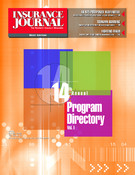New Hampshire is the only state that doesn’t require adult motorists to wear seat belts, but it does ticket drivers for eating, drinking, talking on a cell phone or fussing with their makeup while behind the wheel.
The state whose motto is “Live Free or Die” passed the nation’s first law against distracted driving in 2001. Since then, every state has looked at ways to keep drivers’ minds on the road, but lawmakers in most states are choosing to focus more narrowly on restricting cell phone use while driving.
Under New Hampshire’s law, drivers face fines of up to $1,000 if police find that any distracting activity caused an accident, according to Peter Thomson, who heads New Hampshire’s Highway Safety Agency.
In other states, the list of illegal distractions is shorter, including 38 states that prohibit drivers from watching television. Eleven states and the District of Columbia have laws restricting cell phones while driving, while 19 states also track mobile phone involvement in auto crashes.
Cellular communications companies and even some road-safety advocates argue that limits on cell phones miss the mark, saying New Hampshire’s approach is better.
“If you’re going to have a law, it should cover all distractions,” said Jonathan Adkins of the Governors Highway Safety Association, the nonprofit association that represents state road safety offices. But a bill to punish distracted driving was voted down in a Maryland Senate committee this year, and similar bills in the Tennessee House and Senate are, so far, stuck in committees.
Laws against cell phones come in different varieties. New Jersey, New York and the District of Columbia require drivers to use a hands-free cell phone. School bus drivers are not allowed to talk on cell phones, except in emergencies, in Arizona, Arkansas, California, the District of Columbia, Delaware, Illinois, Massachusetts, New Jersey, Rhode Island and Tennessee.
And teen drivers are banned from talking on cell phones in the District of Columbia, Maine and New Jersey. Both chambers of the Maryland General Assembly now have voted to bar teens from using cell phones for the first 18 months after they earn their license, but a measure hasn’t yet been sent to the governor.
In a move that protects drivers’ freedom to use cell phones, seven states have passed laws that prevent a patchwork of varying municipal rules on the subject. Florida, Kentucky, Louisiana, Mississippi, Nevada, Oklahoma and Oregon restrict local governments from enacting their own laws on cell-phone use while driving.
This legislative season, lawmakers in 26 states have proposed 62 bills limiting cell phone use while driving, according to the National Conference of State Legislatures. The most common proposals, in 14 states, would require that drivers use a headset to talk. Bills awaiting approval in 10 states would restrict younger drivers from cell phone use. And legislation in three states-Connecticut, Indiana and New York-would completely ban cell phone use by drivers.
The Governors Highway Safety Association supports cell phone restrictions for younger drivers, said Adkins. But there is no evidence that requiring a headset makes using a cell phone any safer, he said.
A University of Utah study released in February found that 18- to 25-year-old drivers talking on a cell phone with a headset reacted as slowly as 65- to 74-year-old drivers without cell phones. Older drivers also reacted more slowly while talking on cell phones, the report said.
Wireless phone companies, on the other hand, point to research that using a cell phone is among the least common distractions for drivers. A 2003 study funded by AAA found that fiddling with radio dials, eating and drinking, talking with passengers, grooming, reading and writing were more common activities for drivers than talking on a phone.
The existing data suggest that cell phones are a factor in a tiny fraction of crashes. A 2003 report by NCSL said that crash data from seven states showed that cell phones were a factor in less than 1 percent of accidents. But the information is not conclusive, because there is not usually any physical evidence of cell phone use at a crash site, said Matt Sundeen, a transportation researcher at NCSL.
Send your comments on this story to letters@stateline.org. Contact Eric Kelderman at ekelderman@stateline.org.
Was this article valuable?
Here are more articles you may enjoy.


 Everton FC Buyer Accused of Fraud, Double-Pledging Assets in Lawsuit
Everton FC Buyer Accused of Fraud, Double-Pledging Assets in Lawsuit  Worsening Weather Igniting $25 Billion Weather Derivatives Market
Worsening Weather Igniting $25 Billion Weather Derivatives Market  Viewpoint: The 10 Major Risks Shaping Insurance Today
Viewpoint: The 10 Major Risks Shaping Insurance Today  Liberty Mutual Posts $1.5B Net Income for Q1, Reversing Loss
Liberty Mutual Posts $1.5B Net Income for Q1, Reversing Loss 


